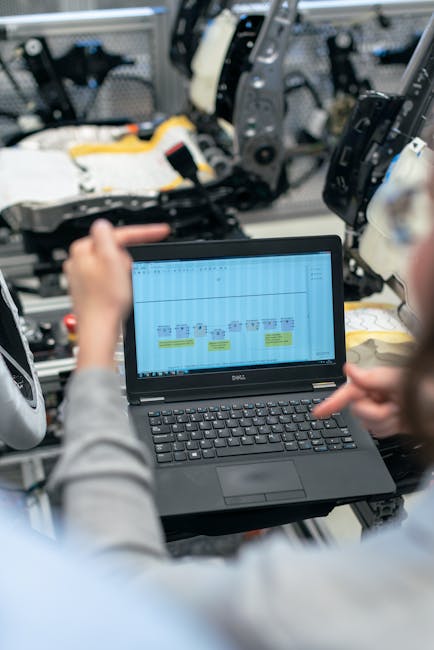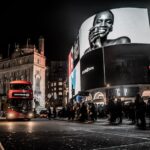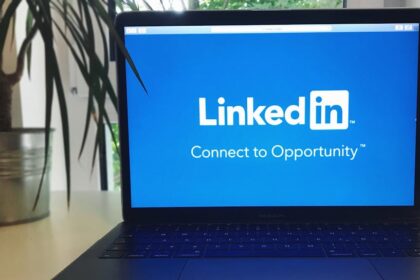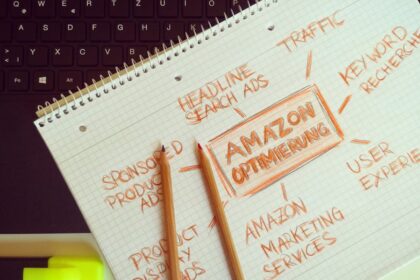Crafting High-Converting LinkedIn Ad Creatives
LinkedIn stands unparalleled as a professional networking platform, offering advertisers a unique conduit to a highly engaged B2B audience. Unlike broad-reach platforms, LinkedIn’s strength lies in its rich professional data, enabling hyper-targeted campaigns that resonate with specific industries, job titles, company sizes, and skill sets. However, even with the most precise targeting, the ultimate success of any LinkedIn ad campaign hinges on the effectiveness of its creative assets. High-converting LinkedIn ad creatives are not merely aesthetically pleasing; they are strategic communication tools designed to capture attention, convey value, and compel specific action from a professional audience. They blend compelling copy with impactful visuals, meticulously tailored to the target persona and their position within the buyer’s journey. The goal is to cut through the noise of the LinkedIn feed, establish relevance, build trust, and ultimately drive measurable conversions, whether that’s a lead, a website visit, or brand engagement.
Understanding the Landscape of LinkedIn Ad Formats and Their Creative Implications
To maximize conversion rates, advertisers must first grasp the nuances of each LinkedIn ad format and how creative elements interact within them. Each format offers distinct advantages and presents unique creative opportunities and constraints.
1. Single Image Ads (Sponsored Content):
This is perhaps the most common and versatile ad format. It appears directly in the LinkedIn feed, blending seamlessly with organic content.
- Creative Implication: The single image must be high-resolution, visually striking, and directly relevant to the ad’s message. It often features professional photography, relevant charts/graphs, or custom graphics that encapsulate the ad’s core proposition. The accompanying text, the “introductory copy,” is crucial here, as it’s the primary means of storytelling. Headlines must be concise and benefit-driven, and descriptions provide additional context. The image acts as the initial hook, drawing the eye before the copy takes over to persuade.
2. Video Ads (Sponsored Content):
Video is an increasingly powerful medium for storytelling and engagement on LinkedIn.
- Creative Implication: Videos must be professionally produced, concise (often under 30-60 seconds for optimal engagement, though longer formats work for specific educational content), and deliver a clear message early on. The first few seconds are critical for grabbing attention. Subtitles are essential, as many users watch videos on mute. The video creative can demonstrate a product, explain a complex service, share a client testimonial, or deliver thought leadership content. The accompanying ad copy should preview the video’s value.
3. Carousel Ads (Sponsored Content):
This format allows advertisers to showcase multiple images or videos, each with its own headline and description, within a single ad unit.
- Creative Implication: Carousel ads are excellent for sequential storytelling, demonstrating different product features, presenting case studies, or offering a multi-faceted view of a service. Each card in the carousel acts as a miniature ad, contributing to a larger narrative. The creative challenge lies in ensuring a coherent flow between cards, maintaining visual consistency, and prompting the user to swipe. The first card is paramount for initial engagement.
4. Document Ads (Sponsored Content):
This relatively newer format allows users to view and download multi-page PDF documents directly within the LinkedIn feed.
- Creative Implication: Document ads are ideal for sharing in-depth content like whitepapers, e-books, reports, or detailed case studies. The “creative” here is the document itself. It must be professionally designed, highly readable, and provide substantial value to justify the download. The introductory copy needs to clearly articulate the document’s benefits and why it’s worth the user’s time. The cover page of the document serves as the primary visual in the feed.
5. Text Ads:
These appear at the top or right side of the LinkedIn feed and are more direct, traditional advertising.
- Creative Implication: With limited space, text ads demand extremely concise, benefit-driven headlines and descriptions. Keywords are vital for relevance. There’s no image, so the copy must do all the heavy lifting in attracting clicks. These are often used for lead generation or driving traffic to specific landing pages.
6. Dynamic Ads:
These personalized ads pull information from a user’s LinkedIn profile (like their profile picture, company name, or job title) to make the ad highly relevant.
- Creative Implication:
- Follower Ads: Encourage users to follow your company page. Creative focuses on the value of following.
- Spotlight Ads: Drive traffic to a landing page or generate leads. Creative emphasizes a clear CTA and often features the user’s profile picture alongside the ad.
- Content Ads: Drive downloads of a specific content asset.
The “creative” here is largely automated personalization, but the ad copy and the small logo/banner image still need to be compelling and concise, focusing on the immediate value proposition that integrates with the dynamic element.
7. Conversation Ads (formerly Message Ads):
These ads deliver a personalized message directly to a user’s LinkedIn inbox.
- Creative Implication: This is a direct conversation starter. The “creative” is the message content itself, which can include text, a call-to-action button, and even a lead gen form. It must be highly personalized, value-driven, and conversational, not overtly salesy. A compelling subject line is crucial for open rates, and the body must immediately demonstrate value. Follow-up messages (multiple choice questions) can further tailor the user experience.
8. Lead Gen Forms:
While not an ad format on its own, Lead Gen Forms integrate seamlessly with Sponsored Content (Single Image, Video, Carousel, Document) and Conversation Ads.
- Creative Implication: When a user clicks a CTA, instead of going to an external landing page, a pre-filled form appears. The “creative” aspect here lies in the clarity of the value proposition that precedes the form, managing user expectations, and ensuring the form fields are minimal and relevant to the offer. The ad creative must clearly set the stage for what the user will receive upon filling out the form.
Understanding these formats is the foundational step. The next critical stage involves mastering the core principles that elevate creative effectiveness across all these options.
Pillars of High-Converting Creatives
High-converting LinkedIn ad creatives are built upon several interdependent pillars, each contributing to the overall persuasive power and relevance of the ad.
Pillar 1: Deep Audience Understanding & Segmentation
The cornerstone of any successful ad campaign, especially on LinkedIn, is a profound understanding of the target audience. Without this, even the most beautifully designed ad will fall flat.
-
Buyer Personas Revisited for Ad Creatives: Go beyond basic demographics. For ad creatives, delve into:
- Pain Points: What challenges keep them up at night professionally? What inefficiencies do they face in their current role or company? Ad creatives should explicitly address these pain points.
- Goals & Aspirations: What are their professional objectives? How can your solution help them achieve these? Frame your ad’s value proposition in terms of their desired outcomes.
- Role & Responsibilities: How does their job function influence their needs and decision-making? A CFO will respond differently to an ad than a Marketing Manager.
- Industry-Specific Language: Use jargon and terminology familiar to their industry to establish immediate credibility and relevance.
- Information Consumption Habits: Do they prefer quick, digestible content (video, short images) or in-depth resources (documents, webinars)? Tailor your ad format accordingly.
- Objections & Concerns: What might prevent them from adopting your solution? Address these subtly within the creative.
-
Mapping Content to Funnel Stages (TOFU, MOFU, BOFU):
Ad creatives must align with where the prospect is in their buyer’s journey. A “one-size-fits-all” creative will convert poorly.- Top of Funnel (TOFU) – Awareness: Creatives here should be broad, educational, and problem-aware. The goal is to capture attention and introduce a problem your solution addresses. Examples: blog posts, industry reports, infographics, short thought leadership videos. The CTA might be “Learn More,” “Download Report,” or “Watch Video.”
- Middle of Funnel (MOFU) – Consideration: Prospects are aware of their problem and actively seeking solutions. Creatives should highlight your unique approach and benefits. Examples: detailed whitepapers, webinars, case studies, product demo videos. CTAs: “Register for Webinar,” “Download Case Study,” “Request Demo.”
- Bottom of Funnel (BOFU) – Decision: Prospects are ready to make a purchase. Creatives should provide compelling reasons to choose your solution. Examples: free trials, personalized consultations, customer testimonials, competitive comparisons. CTAs: “Get a Free Trial,” “Schedule a Call,” “Get a Quote.”
- Creative Alignment: Each creative element (visual, copy, CTA) must reflect the specific stage, offering the right information at the right time. For instance, a TOFU ad would not immediately ask for a demo.
-
Personalization at Scale:
LinkedIn’s targeting capabilities allow for segmentation that enables personalization.- Segmented Ad Sets: Create different ad sets for distinct audience segments (e.g., Marketing VPs in SaaS vs. HR Directors in Manufacturing).
- Customized Creatives: For each segment, develop creatives that speak directly to their specific pain points, using their industry language and showcasing relevant use cases. For example, an ad for software might show a screenshot relevant to financial services for one audience, and another for healthcare for a different audience.
- Dynamic Ads: As mentioned, Dynamic Ads automatically personalize certain elements, leveraging user data for immediate relevance.
-
Leveraging LinkedIn’s Targeting Capabilities for Creative Customization:
LinkedIn offers robust targeting options (Job Title, Company Size, Industry, Seniority, Skills, Groups, etc.).- Message Match: Ensure that your creative directly references or strongly implies the targeting criteria. If you’re targeting HR Directors, your ad should ideally use language like, “Are you an HR Director facing…” or show visuals relatable to their role. This immediate relevance increases click-through rates.
- Exclusion Targeting: Just as important as who you target is who you don’t target. Exclude competitors, current customers (unless it’s an upsell/cross-sell campaign), and irrelevant job titles to prevent wasted spend and maintain creative relevance for your core audience.
Pillar 2: Compelling Ad Copy That Converts
Copy is the verbal architecture of your ad. It informs, persuades, and directs. Even with a stunning visual, weak copy will undermine your conversion efforts.
-
The Hook: Grabbing Attention in the First Line:
In a scroll-heavy feed, the first 1-2 sentences of your introductory copy are paramount.- Problem-Centric Start: “Are you struggling with X?” or “The biggest challenge for Y professionals is Z.”
- Benefit-Oriented Start: “Unlock greater efficiency with…” or “Discover how leading companies are achieving…”
- Intriguing Question: “What if you could eliminate [pain point] by 50%?”
- Bold Statement/Statistic: “80% of businesses fail to…” or “Revolutionize your [process] with…”
- Audience Call-Out: “Attention Sales Leaders:”
The goal is to immediately resonate with the reader’s professional context or aspirations, making them pause their scroll.
-
Problem-Solution-Benefit Framework:
This classic copywriting framework is highly effective for B2B audiences.- Problem: Clearly articulate the specific pain point or challenge your target audience faces. (e.g., “Manual data entry is consuming valuable hours and leading to errors.”)
- Solution: Introduce your product or service as the direct answer to that problem. (e.g., “Our AI-powered platform automates data entry…”)
- Benefit: Explain the positive outcome or transformation your solution provides, focusing on tangible results. (e.g., “…freeing up your team for strategic work and ensuring 99.9% data accuracy.”)
This framework provides a logical flow that guides the reader from recognizing their need to understanding how you can fulfill it.
-
Value Proposition Clarity:
What unique value do you offer? Why should they choose you over competitors? Your ad copy must articulate this succinctly.- Unique Selling Proposition (USP): Highlight what makes your offering different and superior.
- Quantifiable Results: Whenever possible, use numbers, percentages, or time savings. “Reduce costs by 30%,” “Accelerate sales cycles by 2 weeks,” “Save 10 hours per week.”
- Avoid Jargon (unless audience-specific): While industry-specific terms can be good, avoid overly technical or vague corporate jargon that doesn’t convey real value.
- Focus on the “What’s in it for me?”: Every sentence should answer this question from the prospect’s perspective.
-
Storytelling in B2B:
B2B doesn’t have to be dry. Stories create emotional connection and make complex ideas more relatable.- Customer Success Stories (mini-case studies): “See how Company X boosted Y by Z% using our solution.”
- Problem-Solution Narratives: Describe a typical scenario a client faces and how your solution transformed it.
- Visionary Storytelling: Paint a picture of a better future for their business with your solution.
- Use relatable scenarios and challenges. Even a short narrative within the ad copy can be powerful.
-
Urgency & Scarcity (Used Judiciously):
These can motivate immediate action but must be used authentically in B2B.- Limited-Time Offers: “Offer ends Friday!” or “Only 5 spots left for this exclusive webinar.”
- Event Deadlines: “Register by [date] to secure your seat.”
- New Release Windows: “Be among the first to experience…”
Avoid fake scarcity. B2B professionals value trust and long-term relationships; deceptive tactics can backfire.
-
Social Proof & Authority:
Professionals are influenced by what their peers and industry leaders are doing.- Testimonials/Quotes: Short, powerful quotes from satisfied customers.
- Logos of Well-Known Clients: “Trusted by [Logo 1], [Logo 2], [Logo 3].”
- Awards & Recognition: “Awarded ‘Best Software of 2023’ by…”
- Number of Users/Companies Served: “Join 10,000+ companies transforming their operations.”
- Expert Endorsements: If an influencer or industry expert uses/recommends your product.
-
Keywords in Copy:
While less about search engine ranking on LinkedIn ads, strategic keyword use increases relevance for the user.- Targeted Keywords: Use terms your audience uses to describe their problems or solutions. (e.g., “CRM integration,” “supply chain optimization,” “B2B lead generation”).
- Benefit Keywords: Words that highlight outcomes (e.g., “efficiency,” “growth,” “ROI,” “streamline”).
- Action-Oriented Keywords: Words that prompt a response (e.g., “discover,” “learn,” “transform,” “boost”).
This helps the user quickly identify if the ad is relevant to their current needs.
-
Tone and Voice:
Your brand’s personality should shine through while maintaining professionalism.- Professional Yet Engaging: Avoid overly stiff or corporate language. Be approachable.
- Authoritative & Knowledgeable: Establish yourself as an expert in your field.
- Confident & Clear: Don’t waffle. State your value proposition directly.
- Audience-Specific Tone: Adapt your tone to the seniority and industry of your target. A startup targeting tech founders might use a more casual, innovative tone than a financial services firm targeting traditional enterprises.
-
The Power of Questions:
Questions engage the reader, making them mentally participate.- “Is your team wasting time on repetitive tasks?”
- “Ready to scale your sales efforts?”
- “How can AI transform your business operations?”
Questions directly related to their pain points or aspirations are particularly effective.
-
Crafting Irresistible Call-to-Actions (CTAs):
The CTA is the pivot point for conversion. It must be clear, compelling, and aligned with the offer.- Action-Oriented Verbs: “Download,” “Learn,” “Register,” “Get,” “Start,” “Request,” “Schedule.”
- Benefit-Driven: Instead of just “Download,” try “Download Your Free Guide to [Benefit].”
- Specificity: “Register for the Webinar on X Date,” “Get Your Custom Demo.”
- Urgency (if applicable): “Get Your Offer Before It Expires.”
- Match Button to Copy: Ensure the CTA button text (e.g., “Learn More”) is consistent with the ad copy’s promise.
-
Headline Best Practices:
The headline is often the first visible text beyond the image.- Concise: Often limited characters. Get to the point.
- Benefit-Oriented: What will the user gain?
- Problem-Addressing: Directly speak to a pain point.
- Intriguing: Create curiosity.
- Use Numbers/Stats: “Boost ROI by 25%.”
- Keywords: Include relevant terms.
-
Description Best Practices:
Provides additional context and detail, often visible below the headline.- Elaborate on the Benefit: Expand on the headline’s promise.
- Reinforce Value Proposition: What makes your offer unique?
- Clarify the Offer: What exactly will they get by clicking?
- Credibility: Add social proof or authority if space allows.
- Compel the Click: Reiterate the call to action subtly.
Pillar 3: Visually Striking & On-Brand Design
Visuals are the first point of contact and play a crucial role in stopping the scroll. On LinkedIn, professionalism, relevance, and clarity are paramount.
-
The Psychology of Color in B2B:
Colors evoke emotions and associations.- Blue: Trust, professionalism, stability (common in finance, tech).
- Green: Growth, freshness, nature (eco-friendly, health tech).
- Grey/Silver: Sophistication, neutrality.
- Black: Power, luxury, formality.
- Avoid Overly Bright/Distracting Colors: Unless it’s part of your specific brand identity and targets a younger, more dynamic audience.
Use colors that align with your brand identity and the message you want to convey, subtly influencing perception.
-
Image Selection: Professionalism, Relevance, Emotion:
- High-Resolution: Pixelated or blurry images immediately diminish credibility.
- Relevance: The image must directly relate to your offer or the problem you’re addressing. Abstract art is rarely effective in B2B.
- Authenticity: Stock photos can feel generic. Opt for custom photography or thoughtfully curated stock that doesn’t look staged.
- Professionalism: Images should reflect the serious nature of B2B. No blurry selfies or unprofessional graphics.
- Show, Don’t Just Tell: If selling software, show a clean, intuitive interface. If selling a service, show happy, collaborative teams (if appropriate).
- Subtle Emotion: While B2B is logical, subtle human emotion (e.g., a satisfied customer, a collaborative team) can make an ad more relatable.
- Minimal Text on Image: LinkedIn has guidelines, but generally, fewer words on the image itself allow the primary ad copy to shine and avoids looking cluttered.
-
Video Production: Scripting, Production Quality, Length, Message:
- Compelling Script: A well-structured script is the backbone. It should define the hook, problem, solution, benefits, and CTA.
- High Production Quality: Poor audio, shaky cameras, or amateur editing are instant turn-offs. Invest in good lighting, clear sound, and professional editing.
- Optimal Length: Most LinkedIn video ads perform best under 30-60 seconds, especially for initial awareness. For educational content or demos, slightly longer is acceptable, but ensure value is delivered consistently.
- Front-Load the Message: The most critical information and hook should appear in the first 3-5 seconds to capture attention before users scroll past.
- Subtitles/Captions: Essential for viewers who watch on mute (the majority on social platforms).
- Brand Integration: Ensure your logo and brand colors are subtly present throughout the video.
- Clear CTA: Integrate a verbal or on-screen CTA in the video itself, reinforcing the button below.
-
Carousel Sequencing for Narrative Flow:
- Story Arc: Each card should advance a narrative. Card 1 sets the scene, cards 2-N elaborate or provide examples, and the final card drives the CTA.
- Visual Consistency: Maintain a consistent design, color scheme, and font across all cards.
- Varied Content: Each card can present a different feature, benefit, testimonial, or case study point.
- Clear Progression: Use arrows or subtle cues to encourage swiping.
- Strong Final Card: The last card should feature a clear, strong CTA.
-
Document Ad Design for Readability:
- Professional Cover Page: This is the visual first impression. It should be branded, title clear, and visually appealing.
- Clear Layout: Use headings, subheadings, bullet points, and ample white space. Avoid dense blocks of text.
- Visuals within Document: Include relevant charts, graphs, and images to break up text and illustrate points.
- Readability: Choose legible fonts and appropriate font sizes.
- Value-Packed Content: The document itself must deliver on the promise of the ad copy.
-
Brand Consistency: Logos, Fonts, Style Guides:
- Recognizable Branding: Your logo should be clearly visible but not intrusive.
- Consistent Aesthetics: Use your brand’s official color palette, fonts, and design elements across all ad creatives. This reinforces brand identity and builds recognition.
- Style Guide Adherence: Ensure all creatives conform to your established brand guidelines. This creates a cohesive and professional image across all campaigns.
-
Aesthetics and User Experience (UX):
- Clean and Uncluttered: Avoid overwhelming visuals or too much text on the image. Simplicity often wins.
- High Contrast: Ensure text is easily readable against the background.
- Hierarchy: Guide the viewer’s eye. What’s the most important element? (e.g., headline, key visual, CTA).
- Visual Appeal: An aesthetically pleasing ad is more likely to be engaged with.
-
Mobile Responsiveness of Creatives:
The majority of LinkedIn users access the platform on mobile devices.- Test on Mobile: Always preview your ad creatives on various mobile devices.
- Legible Text: Ensure all text, especially on images or within videos, remains readable on smaller screens.
- Clear Visuals: Graphics and videos should be impactful even when scaled down.
- Thumb-Friendly CTAs: Buttons should be easily tappable.
Pillar 4: Strategic Call-to-Actions (CTAs) & Landing Pages
A high-converting ad creative is incomplete without a seamless path to conversion. The CTA and the destination landing page are extensions of your creative.
-
Aligning CTA with Funnel Stage:
- As discussed in Pillar 1, the CTA must align with the user’s intent at that stage. Don’t ask for a demo from someone who just became aware of your brand.
- Soft CTAs (TOFU): “Learn More,” “Read Article,” “Watch Video,” “Download Report.”
- Mid-Funnel CTAs (MOFU): “Register for Webinar,” “Download Whitepaper,” “Get Case Study,” “Request Guide.”
- Hard CTAs (BOFU): “Request a Demo,” “Get a Quote,” “Start Free Trial,” “Contact Us.”
Misaligned CTAs lead to high bounce rates and wasted ad spend.
-
Specificity in CTAs:
Ambiguous CTAs like “Click Here” are less effective. Be precise about what the user will get.- Instead of “Submit,” use “Get Your Free Ebook.”
- Instead of “Contact,” use “Schedule a Consultation.”
Specificity reduces friction by setting clear expectations.
-
Placement of CTAs:
- Ad Copy: Incorporate the CTA naturally within the ad copy, often towards the end of the visible text.
- Video Ads: Include a verbal CTA within the video, and an on-screen text CTA at the end.
- Carousel Ads: The final card should feature a strong, prominent CTA.
- Lead Gen Forms: The CTA button on the ad directly triggers the pre-filled form.
-
Landing Page Optimization for Creative Alignment:
The landing page is the direct continuation of your ad creative.- Message Match: The headline and key message of the landing page should mirror or directly extend the ad creative’s promise. Discrepancy creates confusion and distrust.
- Visual Consistency: Maintain brand colors, fonts, and imagery from the ad creative onto the landing page.
- Clear Value Proposition: Reiterate the benefits offered in the ad on the landing page.
- Minimal Distractions: Remove unnecessary navigation, external links, or irrelevant content. The focus should be solely on the conversion goal.
- Mobile Responsiveness: Ensure the landing page loads quickly and looks good on all devices.
- Form Optimization: If applicable, forms should be short, logical, and ask only for essential information. Use clear error messages and pre-fill fields if possible.
-
Lead Gen Forms: Design and Field Optimization:
- Minimal Fields: LinkedIn Lead Gen Forms automatically pre-fill user data, minimizing friction. Only ask for additional fields if absolutely necessary for lead qualification. Every extra field reduces conversion rates.
- Clear Context: Ensure the form’s introduction reiterates the value proposition from the ad.
- Privacy Policy Link: LinkedIn requires a link to your privacy policy.
- Custom Questions (Optional): Use custom questions sparingly and only if they directly aid in lead qualification, as they add friction.
- Thank You Page/Message: After form submission, provide a clear thank you message and next steps (e.g., “Check your inbox for the report,” “Your demo request has been received”).
Advanced Strategies for Creative Optimization
Optimizing LinkedIn ad creatives is an ongoing process that extends beyond initial launch. Continuous testing, analysis, and refinement are essential for sustained high conversion rates.
1. A/B Testing & Iteration:
The scientific method applied to ad creatives. Never assume; always test.
- Hypothesis Generation: Formulate specific, testable hypotheses. (e.g., “Changing the headline from ‘Increase Sales’ to ‘Boost Revenue by 20%’ will increase CTR by 15%”).
- Elements to Test:
- Headlines: Vary benefit, problem, curiosity.
- Body Copy: Different opening hooks, value propositions, social proof, tone.
- Visuals: Different images (people vs. product, abstract vs. direct), video lengths, carousel card order.
- Call-to-Actions: Different phrasing (“Download Now” vs. “Get Your Free Guide”), button colors.
- Ad Formats: Test if a video ad performs better than a single image ad for the same offer.
- Landing Pages: Test variations of your landing page for better alignment.
- Statistical Significance: Don’t stop a test too early. Ensure you have enough data for the results to be statistically valid, not just random fluctuations. Use A/B testing tools or calculators.
- Learning from Data: Analyze what worked and why. Apply these learnings to future creatives. Iteration means continuously improving based on performance. It’s not a one-time activity.
2. Retargeting Creatives:
Retargeting (or remarketing) allows you to serve ads to users who have previously interacted with your brand (e.g., visited your website, engaged with your LinkedIn page, or watched a video).
- Tailoring Messages for Engaged Audiences:
- Website Visitors: If they visited a specific product page, show them an ad for a case study related to that product.
- Video Viewers: If they watched 75% of your TOFU video, serve them a MOFU ad for a webinar or demo.
- Lead Gen Form Abandoners: Remind them of the value proposition and prompt them to complete the form.
- LinkedIn Page Engagers: Offer them exclusive content or a direct next step.
- Sequential Messaging: Build a narrative across multiple ads. First ad introduces problem, second ad introduces solution, third ad offers a demo.
- Excluding Converted Audiences: Crucial to prevent ad fatigue and wasted spend. Once a user converts (e.g., fills a form), exclude them from that specific retargeting campaign, or move them to a new campaign for upsell/cross-sell.
3. Dynamic Creative Optimization (DCO):
LinkedIn offers DCO capabilities, allowing the platform to automatically test and serve the best performing combinations of headlines, descriptions, and images/videos from a pool of assets you provide.
- Leveraging LinkedIn’s DCO Features: Upload multiple creative assets (e.g., 3 headlines, 3 body copies, 3 images). LinkedIn’s algorithm will combine them into various ad variations and optimize delivery based on real-time performance.
- When and How to Use It: Ideal for large-scale campaigns where manual A/B testing of every combination would be impractical. It speeds up the optimization process by letting the algorithm find winning combinations faster. Ensure your creative assets are diverse enough to offer meaningful variations.
4. Incorporating Thought Leadership & Brand Building:
LinkedIn is a prime platform for establishing authority and trust.
- Using Educational Content as Ad Creatives: Promote high-value content like whitepapers, research reports, industry trends, and webinars. This positions your brand as a valuable resource, not just a seller.
- Building Trust and Authority: Creatives that demonstrate your expertise (e.g., a CEO sharing insights in a video, an infographic on a complex topic) build brand equity and warm up prospects for future sales cycles. This also fosters longer-term relationships with your audience, leading to higher conversion rates down the line.
5. User-Generated Content (UGC) & Testimonials:
Authenticity is a powerful converter.
- Authenticity and Social Proof: Actual customer testimonials, reviews, or even screenshots of positive social media mentions are highly credible. For B2B, this might involve video testimonials from key decision-makers or quotes integrated into image ads.
- Ethical Considerations: Always obtain explicit permission before using any UGC or testimonials, especially in a professional context.
6. Competitor Analysis for Creative Inspiration:
- Tools and Methods: Utilize ad spy tools (though less common for LinkedIn) or simply observe competitors’ ads organically in your feed or by visiting their company pages (sometimes they show recent ads).
- Learning Without Copying: Analyze their headlines, CTAs, visuals, and overall message. Identify what resonates, what their unique angles are, and areas where you can differentiate or improve. Don’t copy, but draw inspiration for new angles or creative approaches.
7. Ad Fatigue Management:
Even the best creative will eventually experience diminishing returns as the audience sees it repeatedly.
- Recognizing the Signs: Watch for declining CTR, increasing CPC/CPL, and falling conversion rates over time, especially when reach is high within a specific audience segment.
- Refreshing Creatives: Regularly rotate your ad creatives. Aim to introduce new variations every 2-4 weeks for smaller, highly targeted audiences, and perhaps every 4-6 weeks for broader audiences. This involves changing visuals, headlines, body copy, or even testing entirely new concepts.
Practical Workflow for Creative Development
A structured approach ensures efficiency and effectiveness in developing high-converting LinkedIn ad creatives.
Phase 1: Research & Planning
- Audience Insights: Revisit your buyer personas. Conduct interviews, analyze existing customer data, and use LinkedIn Audience Insights to understand their pain points, goals, and content preferences.
- Goal Setting: Clearly define campaign objectives (e.g., lead generation, brand awareness, website traffic, MQLs). This dictates the type of creative and CTA.
- Budget Considerations: Understand your ad budget. This influences the complexity of creative assets (e.g., professional video production vs. static images) and the scale of testing.
- Content Inventory: Review your existing content assets (blog posts, whitepapers, webinars, case studies, videos). Can any be repurposed or adapted into ad creatives? This often saves time and resources.
Phase 2: Creative Conception & Asset Gathering
- Brainstorming Sessions: Collaborate with sales, marketing, and product teams. Generate diverse ideas for angles, hooks, and visual concepts.
- Copywriting: Draft multiple variations of headlines, introductory text, and descriptions. Focus on clarity, value, and compelling language. Get feedback.
- Design/Video Production:
- Image Creation: Design custom graphics, infographics, or select high-quality stock photography. Ensure brand consistency.
- Video Production: If budget allows, script, shoot, and edit professional videos. If not, consider animated graphics or repurposing existing video content.
- Carousel/Document Design: Plan the narrative flow for carousels; design documents for optimal readability and impact.
- Stock vs. Custom Assets: While custom assets are ideal for authenticity, high-quality, relevant stock photos/videos can be a cost-effective alternative. Ensure they don’t look generic.
Phase 3: Implementation & Launch
- Ad Platform Setup: Upload creatives into LinkedIn Campaign Manager. Ensure correct ad format selection.
- Tracking Pixel Configuration: Verify that your LinkedIn Insight Tag is correctly installed on your website and that conversion tracking is set up for your desired actions (e.g., lead gen form submissions, specific page views). This is crucial for measuring creative performance.
- Quality Assurance: Double-check all creative elements for typos, broken links, resolution issues, and adherence to LinkedIn’s ad policies. Preview ads on both desktop and mobile.
Phase 4: Monitoring & Optimization
- Key Performance Indicators (KPIs) for Creatives:
- Click-Through Rate (CTR): How effective is the ad at grabbing attention?
- Conversion Rate (CVR): How effective is the ad at prompting the desired action?
- Cost Per Click (CPC): Efficiency of clicks.
- Cost Per Lead/Conversion (CPL/CPA): Ultimate measure of creative effectiveness in driving business goals.
- Engagement Rate: Likes, comments, shares (indicate relevance and resonance).
- Video Completion Rate: For video ads, how much of the video are people watching?
- Relevance Score/Feedback: LinkedIn provides feedback on ad relevance, which can inform creative adjustments.
- Analyzing Ad Analytics: Regularly review performance data within Campaign Manager. Identify trends, top-performing creatives, and underperformers.
- Iterative Improvements: Based on data, pause underperforming creatives, launch new variations, refine copy, adjust visuals, and continuously test hypotheses. This feedback loop is essential for maximizing ROI.
Common Pitfalls and How to Avoid Them
Even experienced marketers can fall into common traps when crafting LinkedIn ad creatives. Awareness is the first step to avoidance.
1. Generic Messaging:
- Pitfall: Using vague, corporate buzzwords or copy that could apply to any company or product. (“We offer synergistic solutions for enhanced productivity.”)
- Avoidance: Be specific. Focus on quantifiable benefits, address a distinct pain point, and use language that resonates with your specific target audience. What makes you different?
2. Poor Visual Quality:
- Pitfall: Low-resolution images, amateur video production, clip art-style graphics, or visuals that don’t look professional.
- Avoidance: Invest in high-quality design and video production. Use professional photography or well-designed custom graphics. Ensure visuals are crisp, clear, and align with your brand’s professional image. LinkedIn is a professional network, and your creatives should reflect that.
3. Mismatched Creative-to-Landing Page:
- Pitfall: The ad creative promises one thing, but the landing page delivers something else, or has a different look and feel. This creates a jarring user experience.
- Avoidance: Ensure perfect message match and visual consistency between your ad creative and your landing page. The landing page should be a natural extension of the ad, fulfilling the promise made in the creative.
4. Ignoring Mobile Users:
- Pitfall: Creating ads that look great on desktop but are unreadable, distorted, or clunky on mobile devices.
- Avoidance: Always preview and test your creatives on mobile. Ensure text is legible, images are clear, and videos play smoothly on smaller screens. Design for mobile-first.
5. Over-Gating Content:
- Pitfall: Asking for too much information (too many form fields) for a low-value offer (e.g., a short blog post).
- Avoidance: Align the ask with the value. For TOFU content, use Lead Gen Forms with minimal fields. For MOFU/BOFU offers (demos, detailed whitepapers), you can ask for more, but ensure it’s justified by the perceived value. Minimize friction at every step.
6. Neglecting A/B Testing:
- Pitfall: Launching one ad creative and assuming it’s the best performer without testing variations.
- Avoidance: A/B test consistently. Even small changes in headlines, CTAs, or images can significantly impact performance. Make testing a continuous part of your ad strategy.
7. Ad Fatigue:
- Pitfall: Showing the same ad creative to the same audience too many times, leading to declining engagement and rising costs.
- Avoidance: Monitor your ad frequency. Plan to refresh your creatives regularly, especially for highly targeted audiences. Have a rotation of fresh ideas ready.
8. Non-Compliant Creatives (LinkedIn Ad Policies):
- Pitfall: Violating LinkedIn’s advertising policies, leading to ad rejections or account suspension. This includes using misleading claims, prohibited content, or incorrect disclaimers.
- Avoidance: Familiarize yourself with LinkedIn’s ad policies and ensure all your creatives adhere to them. This includes regulations around testimonials, data collection, and intellectual property. When in doubt, err on the side of caution or consult LinkedIn’s support resources.
Future Trends in LinkedIn Ad Creatives
The landscape of digital advertising is constantly evolving, and LinkedIn is no exception. Staying ahead of these trends will ensure your ad creatives remain high-converting in the long run.
1. Increased Personalization & AI:
- Hyper-Personalization: Beyond dynamic ads, expect more sophisticated AI-driven tools that can create truly unique ad experiences for individual users based on their real-time profile data, past interactions, and inferred intent.
- AI-Generated Creatives: AI tools are already assisting with copywriting and image generation. Expect more advanced AI that can suggest, and even generate, optimal ad creatives based on audience data and historical performance, significantly streamlining the creative process.
2. Interactive Ad Formats:
- Beyond Carousels: LinkedIn is likely to introduce more interactive ad units, similar to quizzes, polls, or playable ads seen on other platforms, but tailored for a professional audience. These formats boost engagement by requiring active participation, potentially increasing time spent with the ad and leading to higher recall.
- Gamification: Incorporating game-like elements within B2B ads to make learning about products or services more engaging and memorable.
3. Short-Form Video Dominance:
- Continued Rise: The prevalence of short-form video (think TikTok/Reels influence) will continue to grow on professional platforms. Expect LinkedIn to optimize its feed for even quicker, more digestible video content.
- Vertical Video: As mobile consumption grows, vertical video optimized for smartphone screens will become even more crucial for video ad creatives.
4. Augmented Reality (AR) / Virtual Reality (VR) (Long-term Potential):
- Immersive Product Demos: While currently nascent for LinkedIn ads, AR/VR could eventually allow businesses to offer immersive product demonstrations or virtual tours directly within ad experiences, particularly for complex machinery, software interfaces, or architectural designs. This is a longer-term trend but worth watching.
5. Emphasis on Authenticity:
- Less Polished, More Real: While professionalism remains key, there’s a growing trend towards less overly-produced, more authentic content. This could mean more “behind-the-scenes” videos, genuine employee testimonials, or raw, unscripted expert interviews. Users are increasingly wary of overly polished, inauthentic marketing.
- User-Generated Content (UGC) Amplification: Brands will increasingly leverage organic UGC (e.g., customers sharing their positive experiences with a product/service) in their paid ad strategies to boost credibility and relatability.
In conclusion, crafting high-converting LinkedIn ad creatives is a sophisticated blend of art and science. It demands a deep understanding of your audience, meticulous attention to compelling copy, visually impactful design, and a seamless journey from ad to conversion. Through continuous testing, data-driven optimization, and an eye towards emerging trends, marketers can consistently refine their creative strategies to maximize ROI on this powerful B2B platform.











